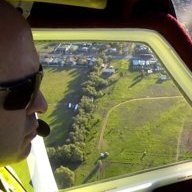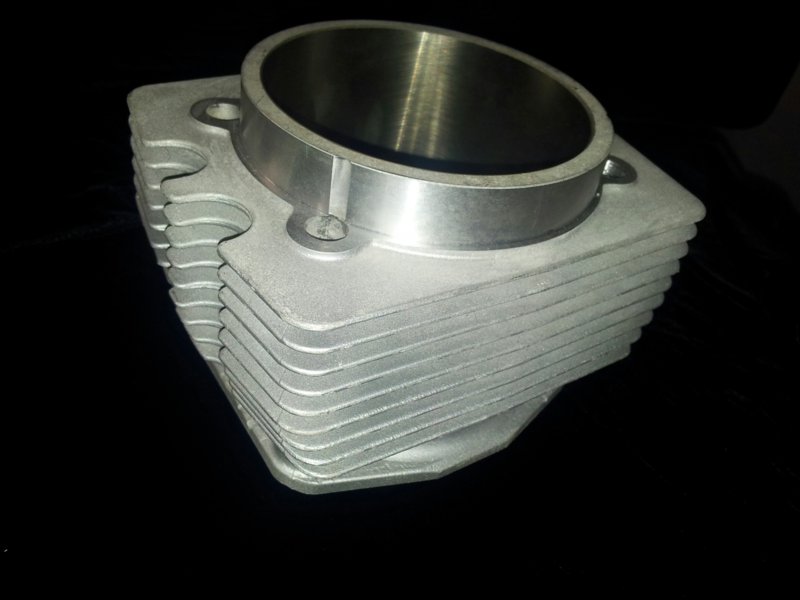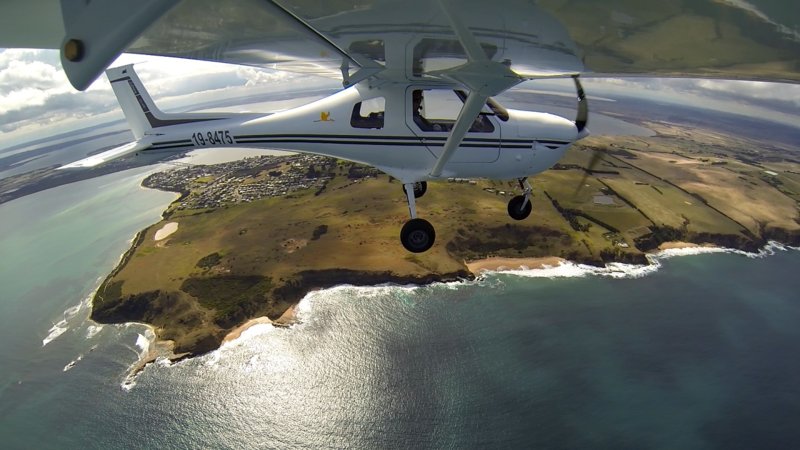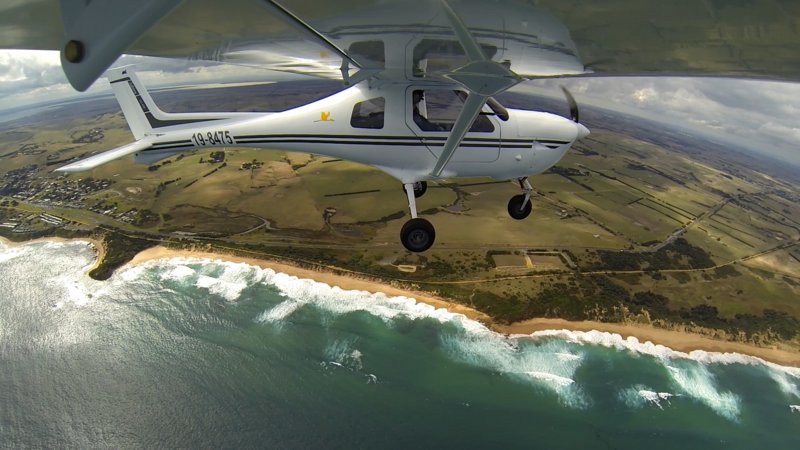-
Posts
660 -
Joined
-
Last visited
-
Days Won
1
Content Type
Profiles
Forums
Gallery
Downloads
Blogs
Events
Store
Aircraft
Resources
Tutorials
Articles
Classifieds
Movies
Books
Community Map
Quizzes
Videos Directory
Posts posted by Keenaviator
-
-
I was thinking self representation but I s'pose that's not practising.
-
Renewed my registration on line on the 5th of May and received the new card in the mail yesterday. All good now.
-
 2
2
-
-
I am running one of these props and so far it is performing well. I certainly will be checking it before the next flight. This prop hub is forged and apparently a very good way to go for structural integrity - maintaining the grain of the metal. I hope the small holes used for the roll pins that lock the pitch to a factory standard are not causing a stress point.
Interestingly I also used a Patroney composite prop on my Corby Starlet. The hub of the Patroney prop is a soft grade of aluminium and was machined by Camit. I've never heard of issues with Paul's props and mine was a beauty and is still going well with the new owner who has put a lot more hours on it than I did.
-
Risk, not rest. Auto text interference.Your 60 to 65 knots touch down speed seems awfully high. The rest there is wheel borrowing and potential ground loop.-
 1
1
-
-
Your 60 to 65 knots touch down speed seems awfully high. The rest there is wheel borrowing and potential ground loop.
-
The Vans RV's, Sonerai and Sonex aircraft have a low aspect deep chord wing and these have a wide speed range and high VNE. I would have thought the Jabiru 250 wing which also has a low aspect and deep chord would be stronger than the long wing variants, including my UL 450's. And therefore have a higher VNE.
Could this accident be an example of CFIT? I believe a local wasn't keen on the weather conditions for flying at the time.
-
How old is this Brumby? Notice the fizz in the top photo?
-
In the past 35 years I have produced many inquest briefs for Coroners (Magistrates officiating coronial inquest). The brief is basically a collection of statements, photos, plans, a detailed summary and conclusion made/obtained by the police investigator. The coroner is immediately informed of a reportable death and a case number is issued. Preliminary reports are submitted immediately (form 83's) and within a few days the investigator is given a date within a month or two, depending on the complexity of the investigation, to have the final inquest brief completed and submitted.The problem is that Police will not release their Brief to the Coroner, and the coroner has a different set of objective to those wanting to learn from an incident.If safety issues arise out of an investigation the member includes these in the conclusion. The coroner may or may not take further action or give directives. I would not want to be the person ignoring a coroner's direction.
-
 2
2
-
-
$220, seems pricey.
-
He, like many of the other vocal, probably doesn't own.And another thing Powerin, I did not actually have the choice of Jabiru vs Rotax vs Lycoming vs Continental.I envy you if you can afford to choose like this, you will probably be driving an expensive but high-safety car.For me, the Jabiru was the only one I could afford.
-
Today's flight along the same San Remo coastline.
-
From the Jabiru factory today, some information regarding a new engine. Looks interesting, not only new cast cylinders/heads but it looks like the induction is very different too.
As we keep saying the Research and Development never stops here at Jabiru. For the last 4 years the Jabiru engineers have been working on the development of the “2210” engine. It’s exciting news!!! There is still work to be done but we are edging closer to the possible launch of this new engine. We are planning to initially release it as an experimental engine. Eventually there will also be a six cylinder released as well.
We have now accumulated just over 800 hours in test time and it is performing well. The engine has non corrosive aluminium cylinders with nickel and silicon carbide bores. These cylinders have three times the thermal conductivity of steel and the bores have very low friction and high wear resistance. The cast cylinders are more robust than the steel cylinders we currently use. We will keep you updated on the progress......... in the meantime we have attached some pictures for you of the “2210”
-
 1
1
-
 1
1
-
-
I don't know why you would want an electric trim instead of the Jabiru designed and tested mechanical one. It works well and is not sloppy.
-
 2
2
-
-
-
How much time do you have as pic in trikes?I am never getting in a trike again they don't look right to me and the risk of some idiot causing a tuck and tumble with you in it does not bear thinking about. I personally have seen a trike instructor doing steep turns, what appeared to be loops except they were slightly off to one side ( not quite right over the top) but certainly breaking all the rules mentioned in earlier posts.-
 1
1
-
-
I think you'll find the certification limits are 30 degrees pitch up or down and 60 degrees angle of bank.Andy, the dreaded "hey watch me"................kill myself trickApparently from what I have been told about the person who died in my old trike last year, he was low & slow and increased his angle of bank more than 60deg most likely and stalled the inner wing while turning final.Trikes are not supposed to climb or descend at angles greater than 45 deg & no angles of bank exceeding 60 deg
-
Would it not be possible to monitor all these aircraft's flight paths/profiles and if they suddenly deviate radically from the plan have control taken off the pilots? Then ground based crews take over until it is established why the deviation. There are lots of military drones flying around that are ground controlled.
-
Or even Porepunkah :)Keenaviator,PS Porpunka should be spelt Porepunka, my error. A picturesque grass strip, close to wineries, excellent restaurants and accommodation, in a valley blessed with excellent weather.-
 1
1
-
-
Earl, do you mind if I forward this to the HGFA?I was in Bright in NE victoria recently, when returning to Bright through Myrleford I picked up a para glider with all his gear. For those who may not know, Bright is a Meccca for para gliders and hang gliders.I asked how far he had gone, and he replied that he was not sure, he launched at Bright, and as he had no recording device, could not tell, but indicated that he had flown over a swamp before he turned back towards Bright, landing in Glerowan, I take the swamp to be Lake Makoan, now Winton wetlands. He did however, say that he had reached 2600 metres.It was busy weekend for air traffic, a couple of planes at Porpunka, including an RV9, a Jab 230 and trikes, and a Warrior and Cessna 172 at Brown Bros, both of which he would have flown over.
The para glider's route would also have taken him through the training areas for both Wangaratta and Bennalla,
So I asked how he kept in touch with the traffic, did he monitor the area CTAF?
He seemed a bit confused, so I explained what it was, he said no, that he kept in touch with other gliders on discrete UHF channel, and that he had seen a number of powered aircraft.
I nearly ran off the road, not only was he in a high potential traffic area, but his altitude would be getting very close the step into Albury, and he did not display any concern.
From what I have learned this is standard operation for this type of aircraft, although I did mention Oz Runways to him, so at least he could see where he has been.
So a word of advice, if you fly into Porpunka, get there before 10 am, particularly on warm days, as after that you will be fighting for air space with oblivious gliders.
I too am a paraglider pilot and this subject is something that has really annoyed me for quite some time.
When flying cross country as this fellow did we are supposed to carry and monitor VHF set to the appropriate frequency. The HGFA also have allotted frequencies on VHF which can be used by HGFA pilots (paragliders, hang gliders, microlights/trikes) to keep in touch with each other. This practice of using UHF CB to communicate is unacceptable. The argument usually given is that you can't use VHF to communicate with retrieve drivers - I can't see why the allotted HGFA VHF frequencies couldn't be used for this purpose. We are all pilots using the same airspace, sometimes near controlled airspace - we should be ensuring we can communicate with all other airspace users.
Another practice that is very common to paraglider pilots and really gets my goat is that they insist on using metres to described their altitude. The standard unit of measure for altitude is feet (metres for horizontal distance and runway length).
-
 1
1
-
 1
1
-
-
Like I said, it looks like he knows what he was doing.The PT-22 version had flaps, but they reportedly were only capable of reducing stall speed by 1-2 kts, but increased R-O-D considerably. The aircraft required a quite high glide speed in clean configuration - have read 75-80 KIAS quoted. Stall speeds are quoted as 55-60 KIAS - depending on model and weight. The aircraft spin readily, especially with rearward CG, (as can be the case if flying solo from the rear cockpit), and training accidents were reportedly common and fatal. All in all, I'd say that HF was a pretty competent driver to be flying one of them, and that trying to land one slowly enough off an engine out, relatively fast glide, was a really good piece of flying. happy days, -
Good to see his injuries aren't too bad. Looks like he knows what he's doing in an emergency.
-
Welcome to the forum Wayne. I recently finished a UL450 build and now have a real appreciation for paint prep and pin holes. You'll get to know what I mean. I used the Stewart Systems water borne paint system and ended up with a nice finish. I am not a painter but followed the instructions and it worked. Please pay great attention to your engine installation and cooling set up.
Regards, Laurie
-
 1
1
-
-
The Corby Starlet is up there.
Really enjoying the long winged Jabbie too.
-
 1
1
-
 1
1
-
-
Hydrate - have a drink of water before landing.After a three hour cross-country on Monday I was on mental autopilot when landing. Lost directional control in a crosswind and was heading for the grass beside the runway so put power on and went around. No problems with the second landing, I was fully alert.What do you do to get the brain going after a trip, for landing? Mints? Caffeine pills? Slap yourself on the face? I could use some advice.-
 1
1
-







Did racing billycarts affect yaw ability?
in AUS/NZ General Discussion
Posted
I've thought about making my kids a tail dragger style billy cart with 'rudder pedals' that work the same as an aircraft. It never came to fruition but still reckon it would have been a lot of fun and the benefit would be training reflexes to work the right way.